Engagement rings symbolize love, commitment, and individual style. While traditional diamond engagement rings are a classic choice, alternative engagement rings featuring non-traditional gemstones are gaining popularity among couples looking to add a modern twist to their “I do.”
These precious stones offer a unique touch to a special piece of jewelry, enabling you to showcase your personal style. They allow for greater expression while often being more budget-conscious. Here’s a look at the top 10 gemstones that make stunning alternatives for engagement rings.
While gemstones might be considered a non-traditional choice for engagement rings, opting for a unique gemstone encircled by a diamond halo can elevate its elegance and make it a stunning choice for a proposal. While only being a fraction of the cost.
A gemstone suitable for an engagement ring should have a minimum hardness of 7 on the Mohs scale. This ensures it will be durable enough for everyday wear and use.
Sapphire
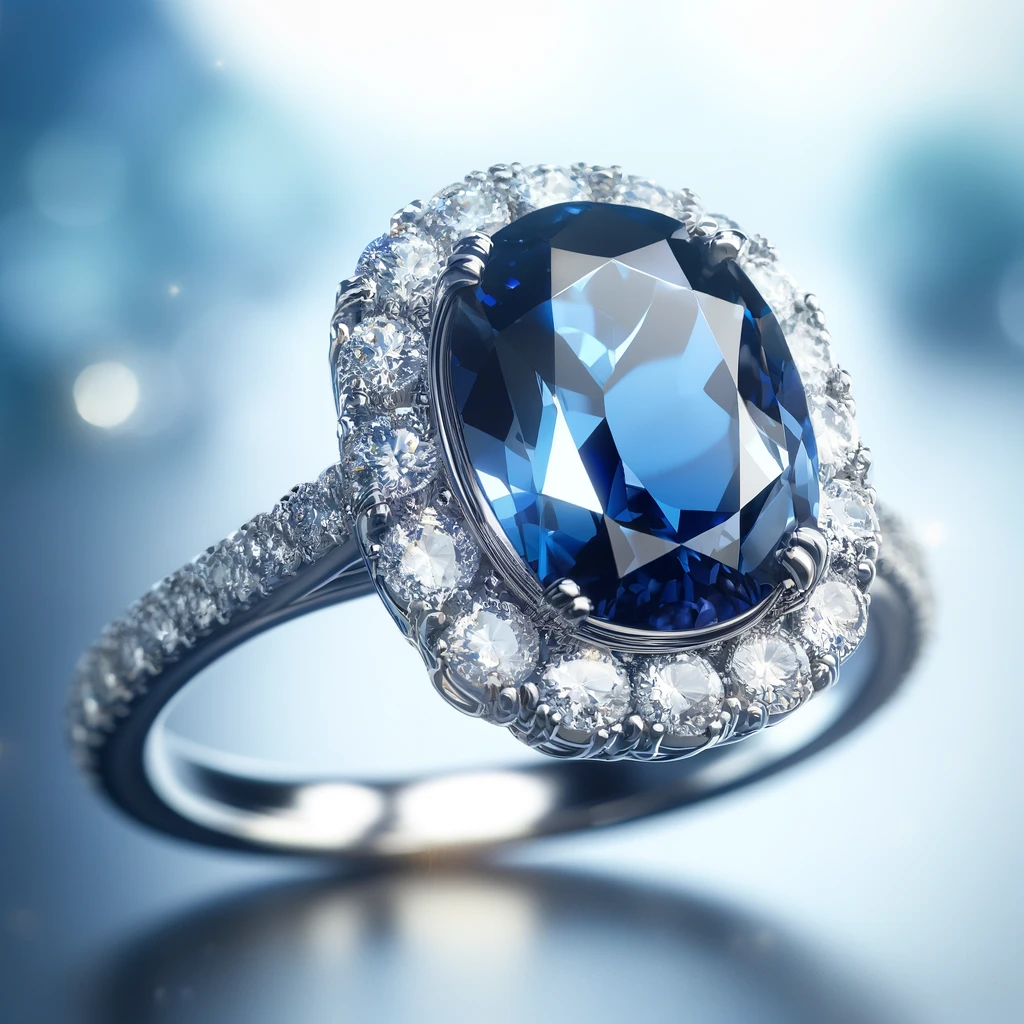
A popular choice for engagement ring stones due to its excellent hardness on the Mohs scale, blue sapphire offers timeless beauty with a hint of royal flair. Sapphires symbolize wisdom, and virtue, all while having a rich history in the world of gems.
Beyond the classic blue, sapphires come in many colors, providing flexibility in design. The durability of sapphires makes them perfect for everyday wear.
They are a much more affordable gemstone than diamonds, giving you more flexibility in your budget to free up funds to spend on a more intricate band
Morganite
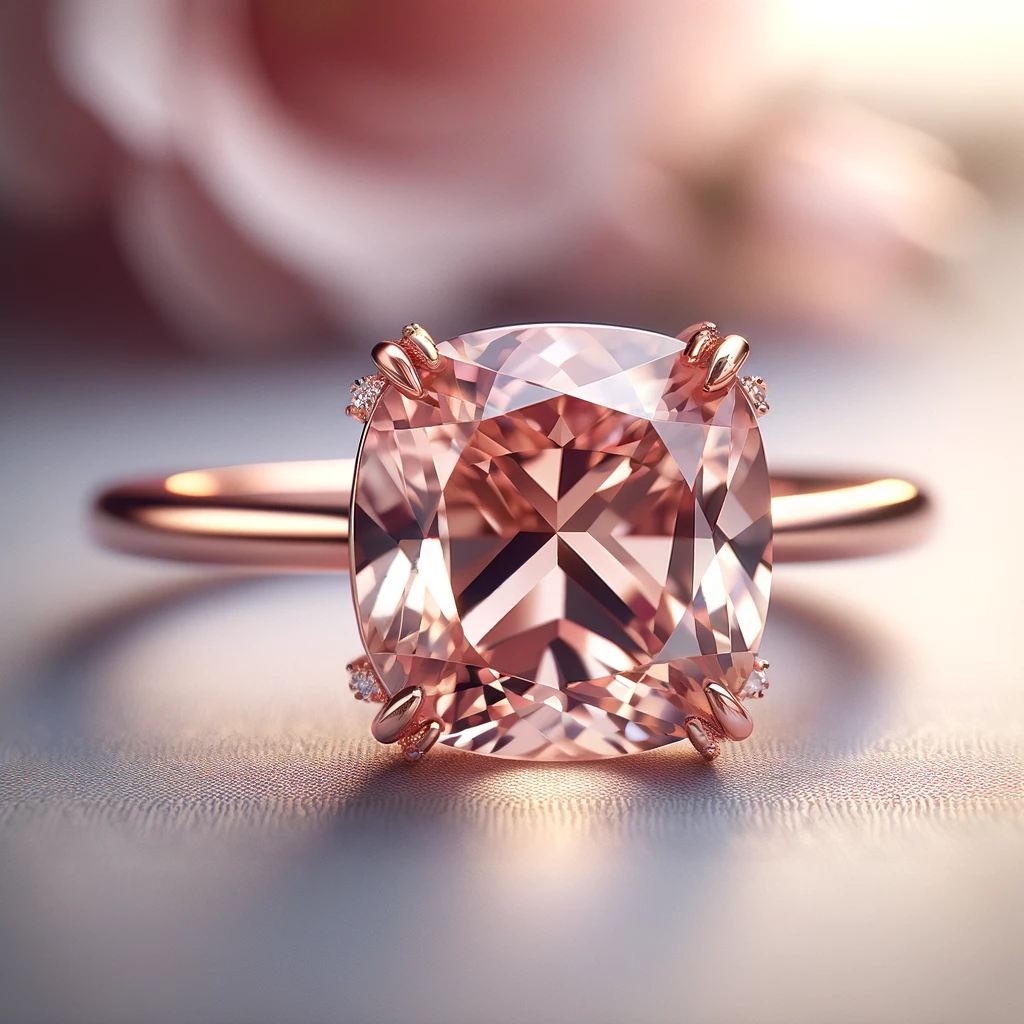
Known for its soft pink hues, morganite is an engagement ring alternative that exudes romance and elegance.
While softer than diamonds, morganite is still relatively high on the Mohs scale. Making it fit for everyday wear.
Its gentle colors pair beautifully with rose gold bands or gold settings, creating a modern twist on the classic engagement design.
Ruby
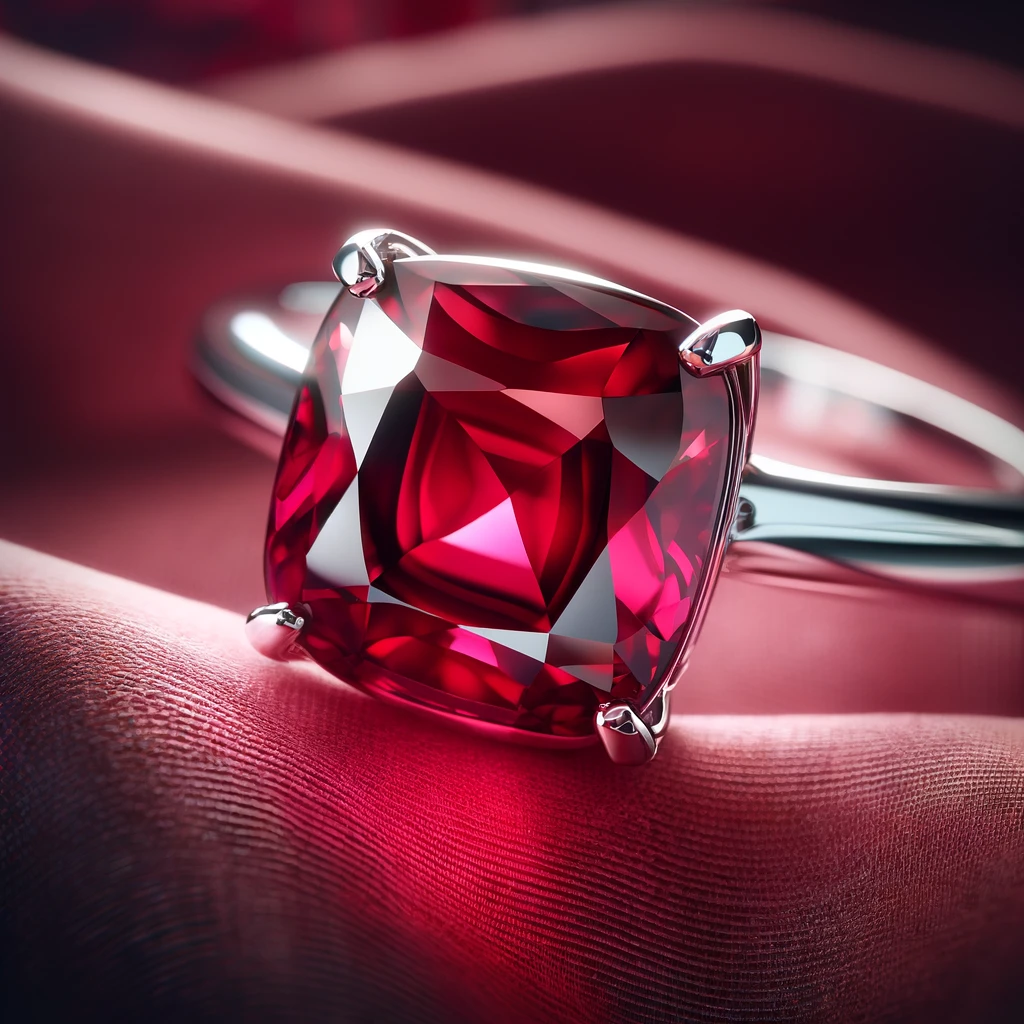
Rubies are a stunning choice with their vibrant red color and outstanding hardness. Rubies are right behind diamonds in durability, making them fantastic for everyday wear.
Although cheaper than diamonds, rubies are still relatively expensive stones. Prized for their rarity and rich history, symbolizing passion, protection, and wealth.
Rubies are versatile in jewelry design, pairing beautifully with both white and yellow metals making it a great gemstone engagement ring.
Emerald
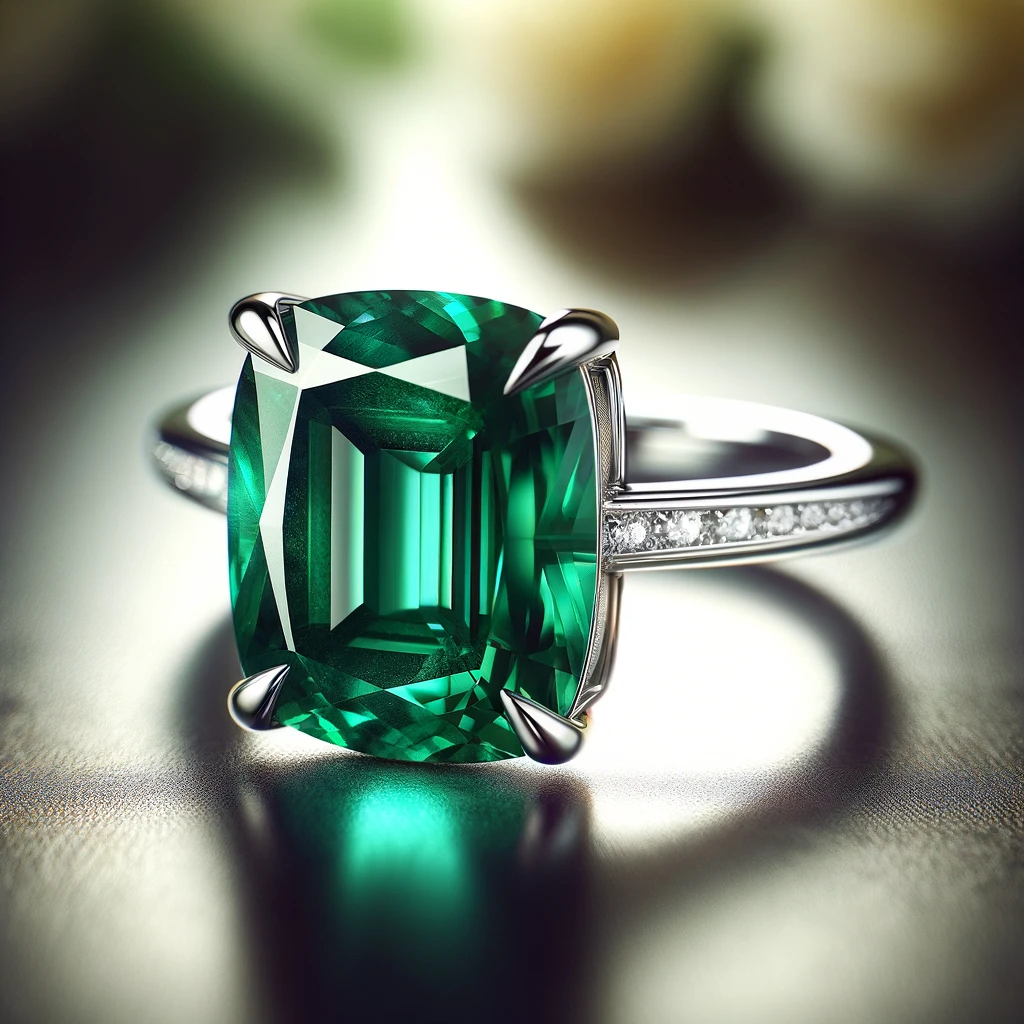
Known for its lush green color, the emerald is a precious stone that brings a sense of luxury and depth to engagement rings.
It symbolizes truth and love, has a rich history, having been sought after since ancient times.
It’s important to note that while still pretty durable an emerald is not as hard as a ruby or sapphire and will require extra care to ensure it doesn’t get damaged.
Amethyst
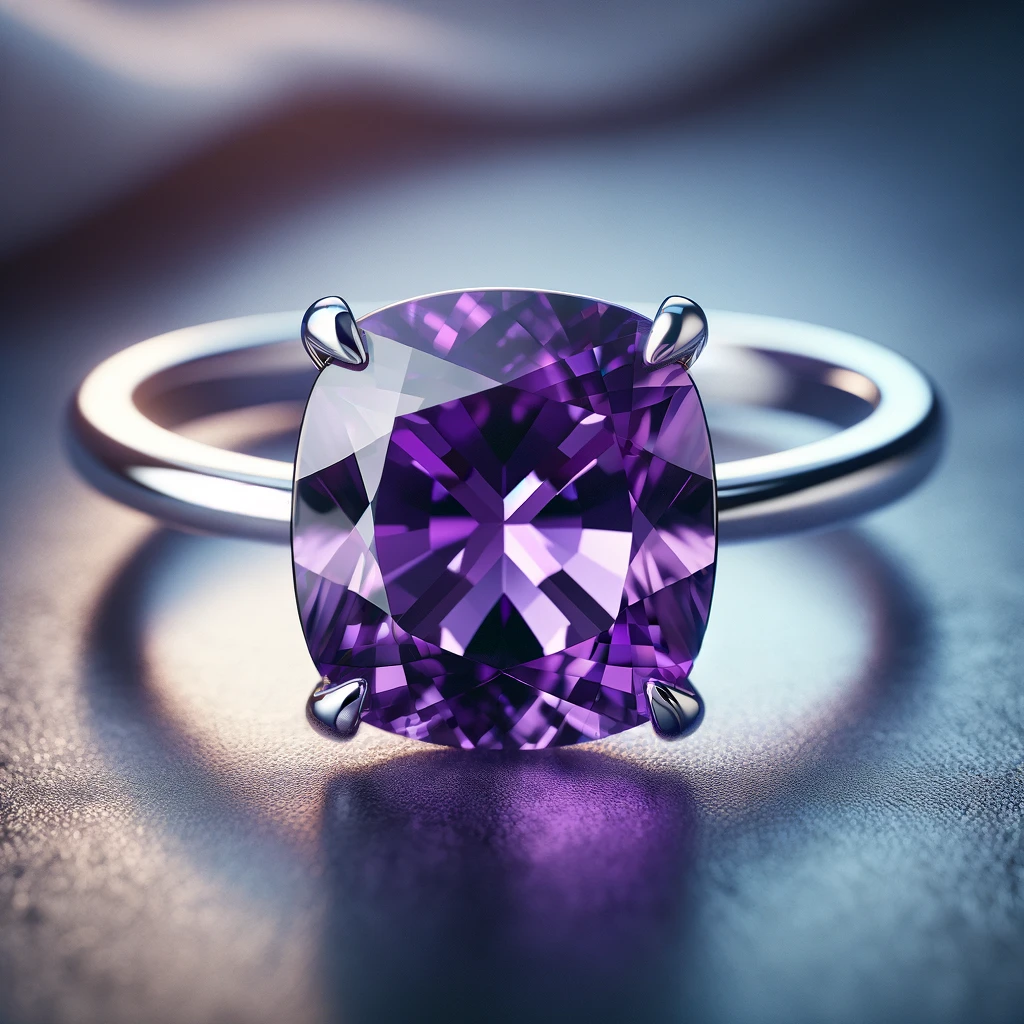
This deep purple stone offers a distinctive choice for engagement ring selections.
Symbolizing happiness and humility the amethyst can be a great option for an engagement ring.
While it is more affordable than traditional gemstones like diamonds, sapphires, and rubies, its lower hardness rating requires a bit more care.
However, it is still viable for daily wear with some extra caution.
Opal
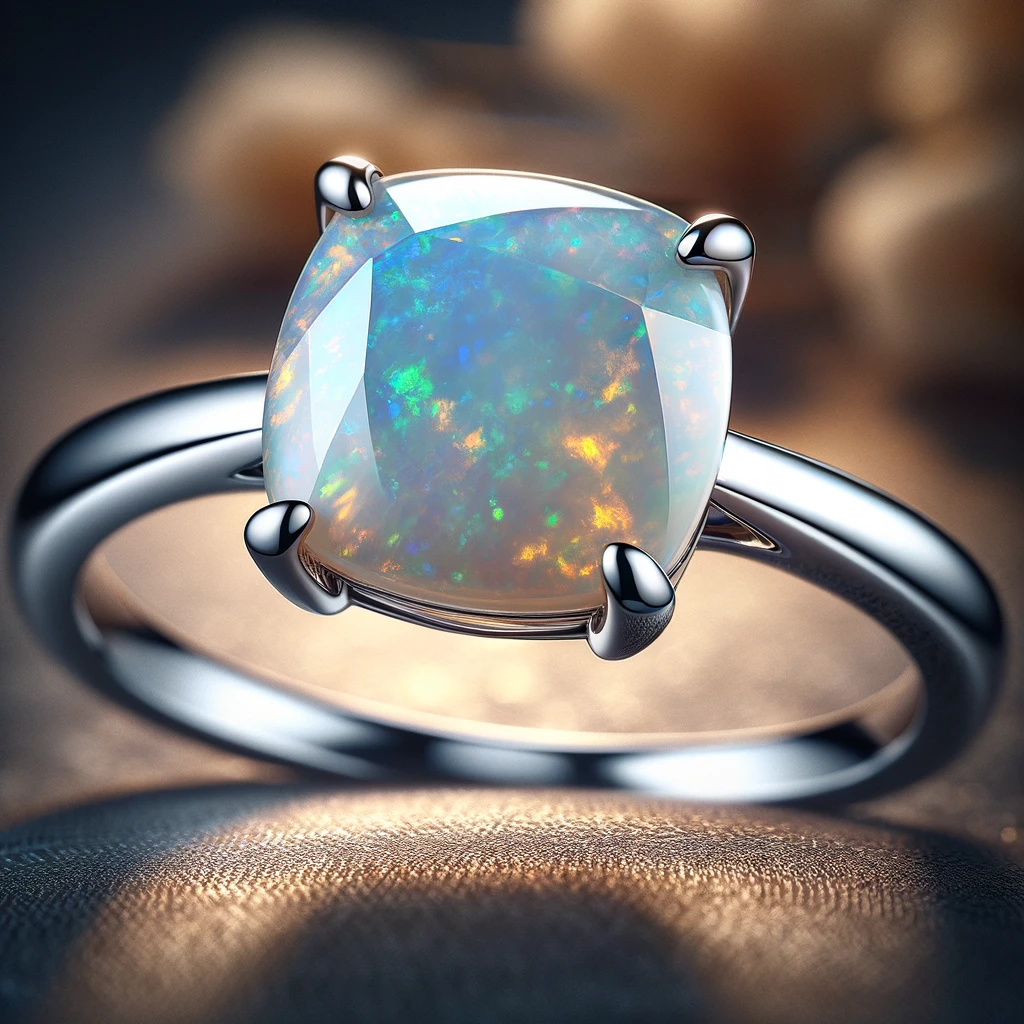
Opal engagement rings provide a kaleidoscope of colors and come in numerous hues, with each stone offering a unique pattern.
Ideal for those who want a ring as unique as their love story, opals are perfect for custom pieces that tell a personal tale.
Opals symbolize hope and truth. However, being much lower on the Mohs scale, opals are susceptible to scratches, cracks, and color changes with temperature fluctuations. An opal may not be suitable for everyday wear due to the risk of damage.
Aquamarine
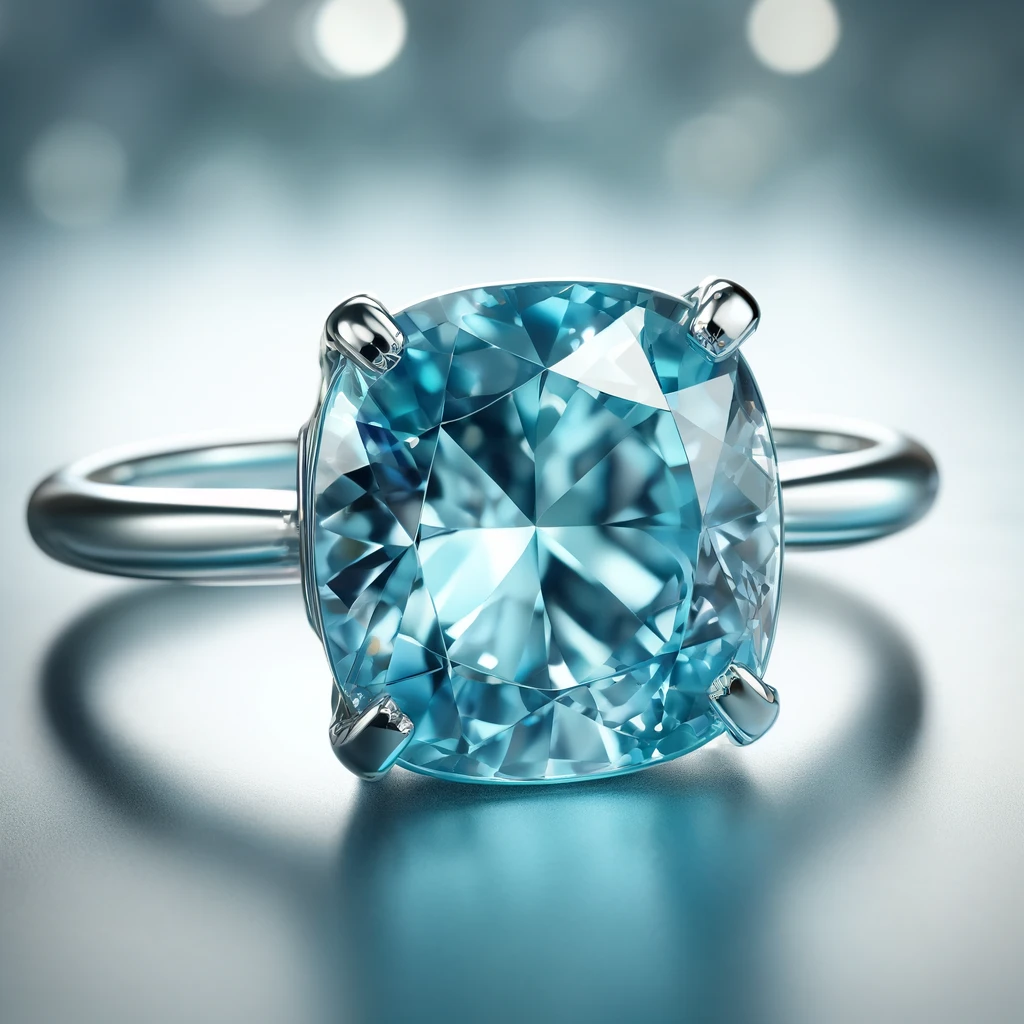
The serene blue tones of aquamarine reflect calmness and clarity, making it an exceptional choice for an engagement ring.
Its hardness makes it suitable for daily wear, and it pairs beautifully with both modern designs and classic stones and bands.
Given these characteristics, an aquamarine ring can be a beautiful, meaningful, and practical choice for an engagement, combining visual beauty with symbolic depth and durability.
Topaz
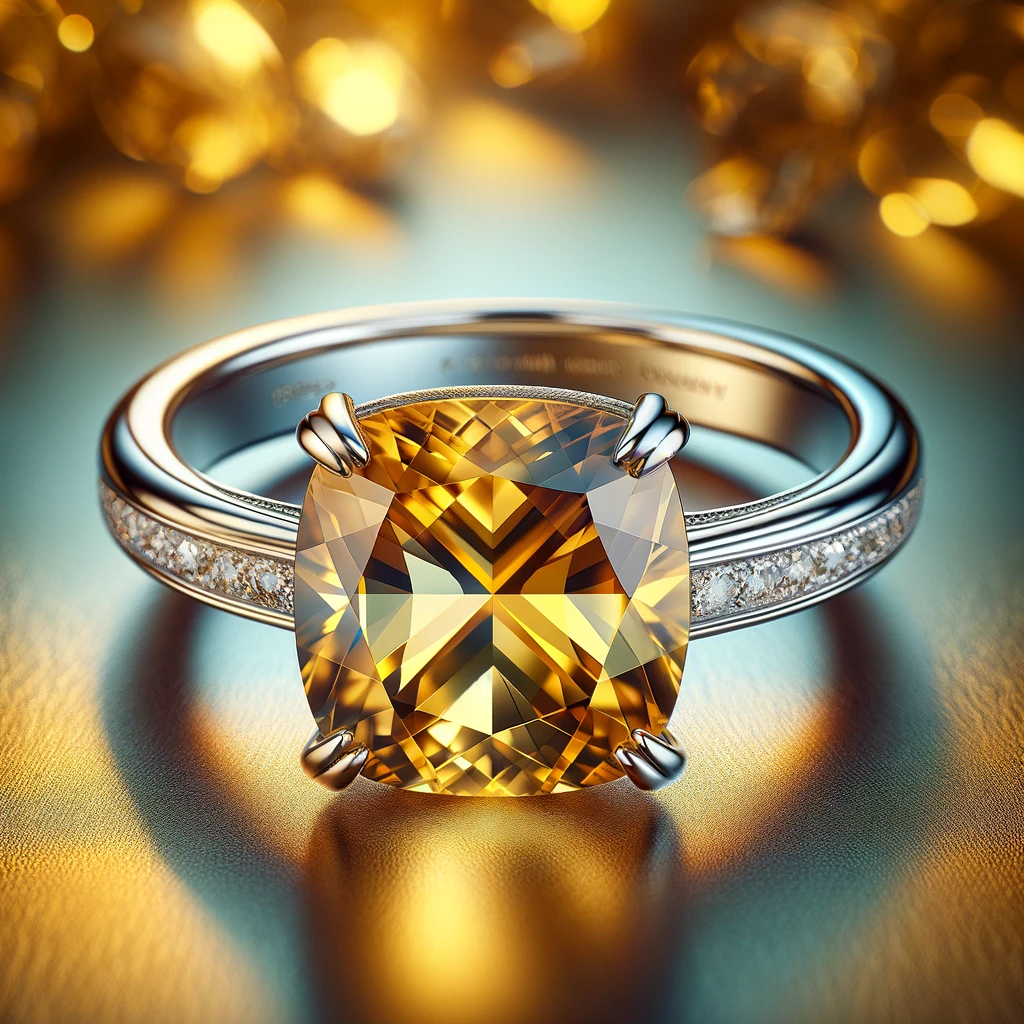
Symbolizing heath and love topaz is a flexible gemstone due to the variety of colors.
The blue topaz and white topaz, in particular, is a popular option that works well in both contemporary settings and classic designs.
Topaz is an extremely durable and cost-effective option, making it a great diamond ring alternative.
Garnet
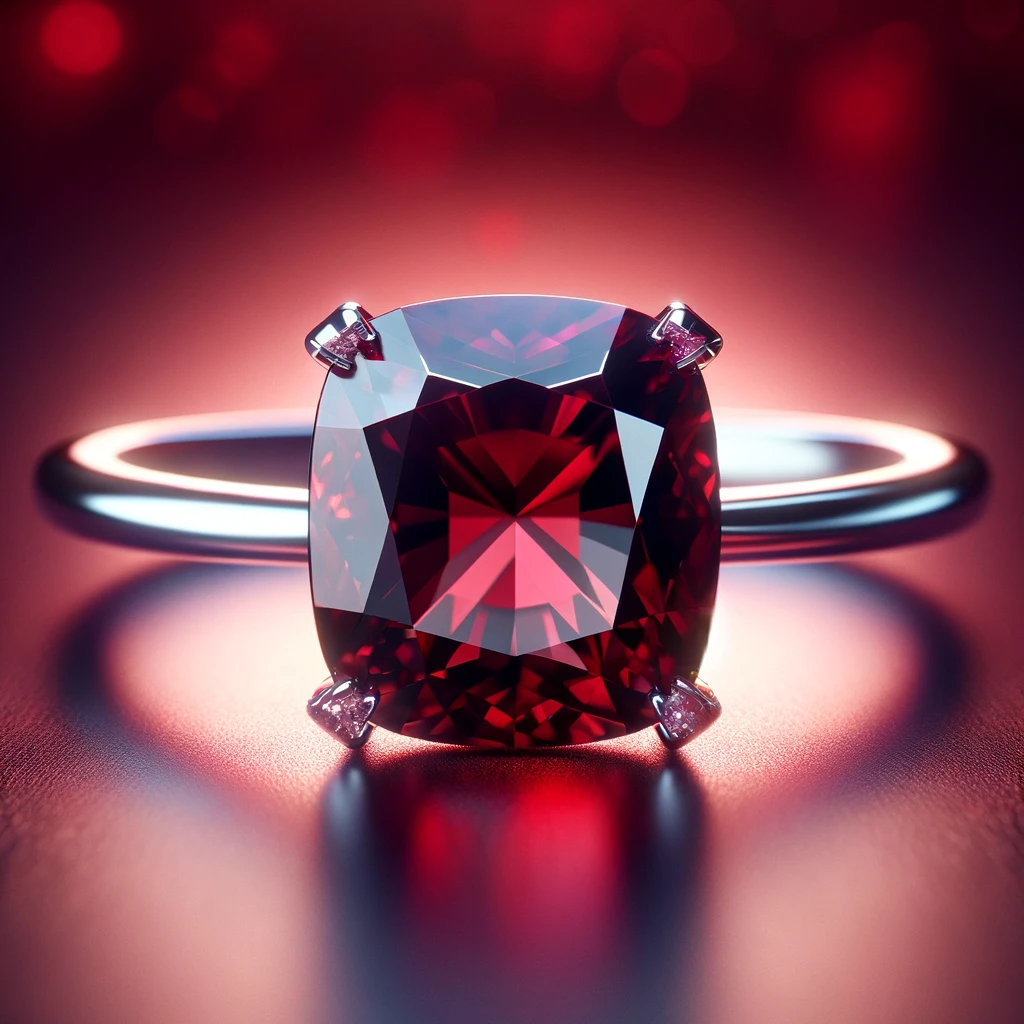
Garnet’s rich hues, including deep reds, vibrant oranges, and greens, make it a colorful choice for those seeking a unique engagement ring.
Garnets symbolize trust and commitment. While garnets are durable, they are not as durable as topaz, so some extra caution is warranted.
Lapis Lazuli
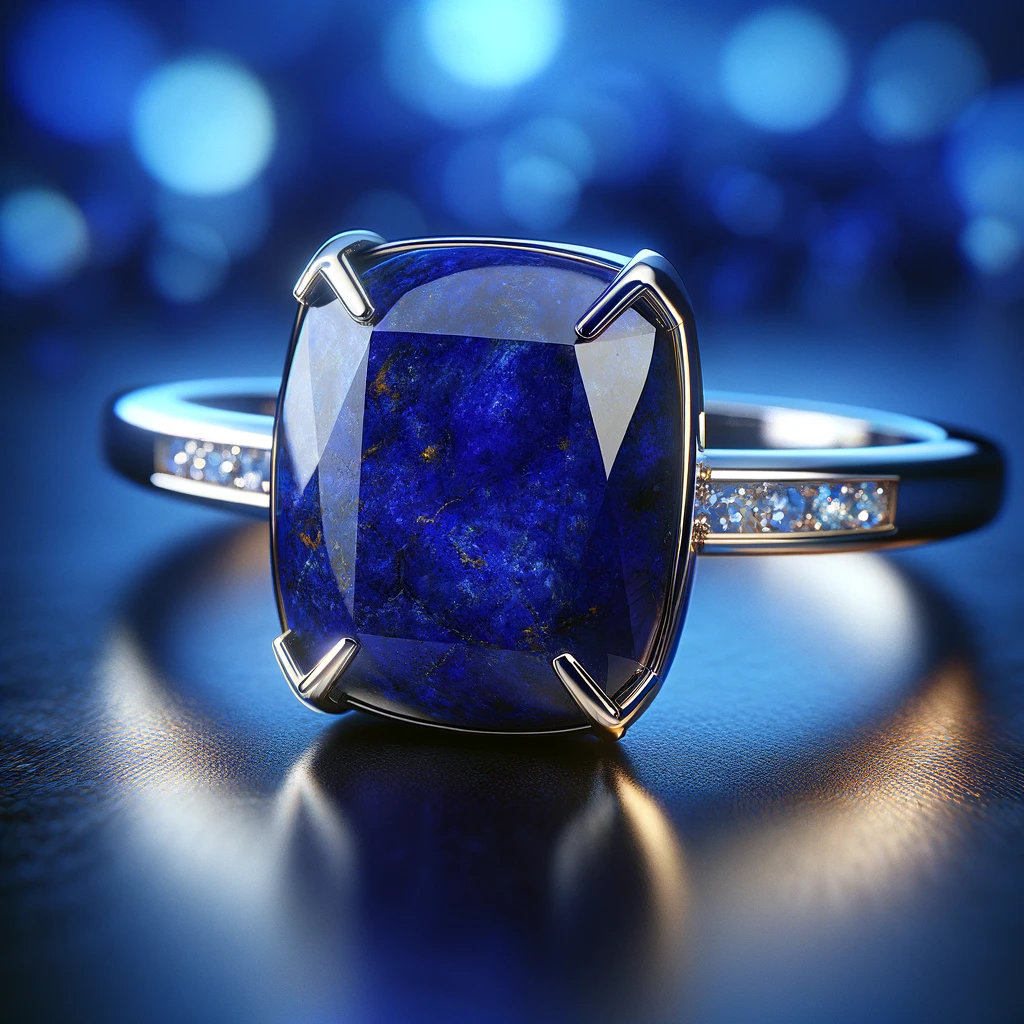
It is famous for its deep blue color and golden flecks. Lapis lazuli is often associated with strength and courage.
However, it is worth noting that lapis lazuli is relatively soft, rating about 5 to 5.5 on the Mohs scale, making it more susceptible to scratches and wear.
It requires careful handling and maintenance to keep it looking its best. Everyday wear is not recommended.
What is a good substitute for diamonds in rings?
A popular diamond alternative in rings is moissanite. Moissanite is a gemstone that closely resembles diamonds in terms of brilliance and clarity but is significantly more affordable. It is almost as hard as diamonds on the Mohs scale, making it durable enough for everyday wear.
Moissanite is also praised for its exceptional fire and sparkle, often displaying more colorful flashes of light than diamonds. Additionally, it is an eco-friendly choice as it is lab-created, reducing the environmental impact associated with mining.
For those seeking a diamond-like appearance without the hefty price tag or environmental concerns, moissanite is an excellent alternative to diamonds.
It’s important to note that while moissanite is a natural gem, it is extremely rare to find. The majority of the moissanite available today is lab-grown. Lab-grown does not mean synthetic, as it still has the same chemical structure; rather, it is grown in a controlled lab environment, rather than in the earth’s crust.
Which gemstone is best for engagement rings?
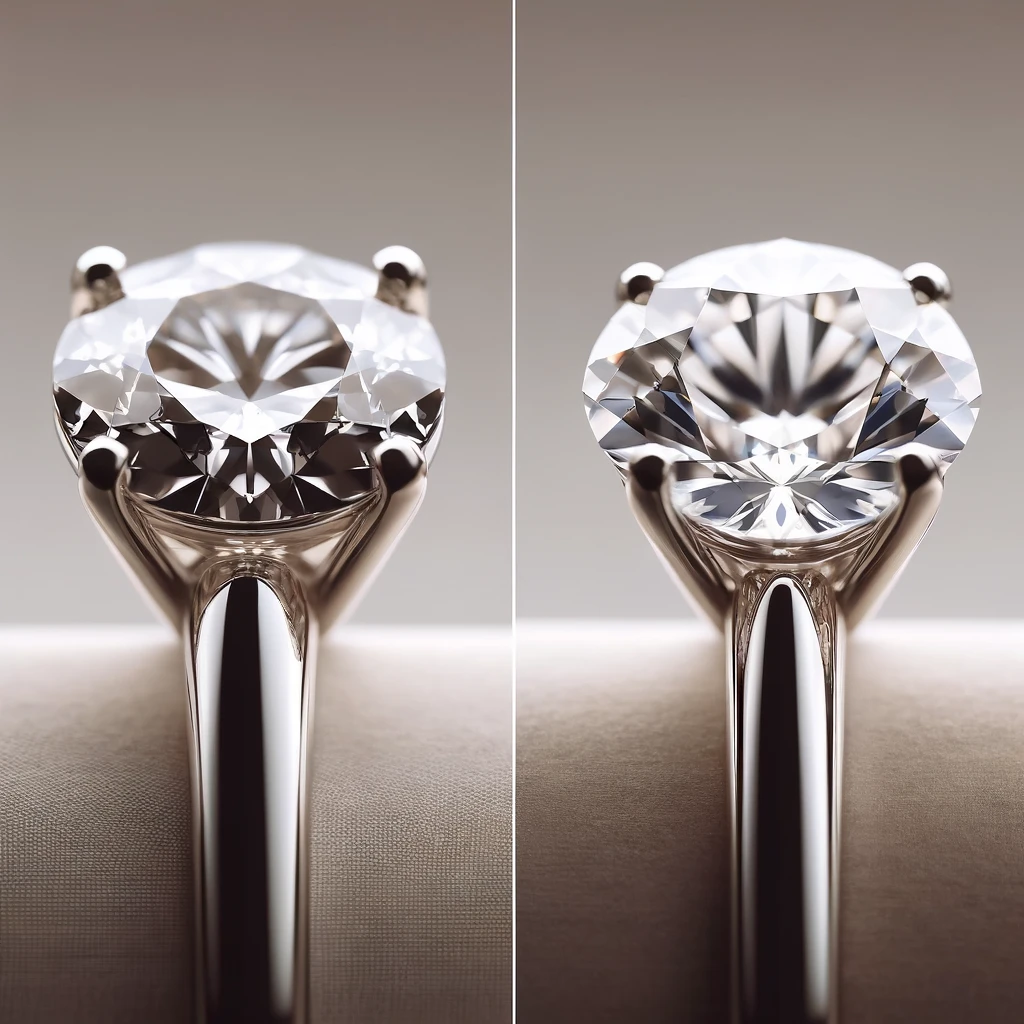
The “best” gemstone for the modern couple can be worn daily without the worry of damage. Typically, this means choosing a stone with a hardness of 8 or higher on the Mohs scale.
Diamonds are often the preferred choice for their unparalleled durability, but many other gemstones are also remarkably resilient and resistant to damage. Additionally, these gems often carry a rich history, adding to their preciousness.
The best gems are:
- Sapphire and Ruby – hardness rating of 9
- Topaz – hardness rating of 9
- Emerald – hardness rating of 8
- Aquamarine – hardness rating of 7.5 – 8.
- Moissanite is an honorable mention, due to it being a mostly lab-grown gem. Hardness can be anywhere between 8 – 9.5
Which fake stone looks most like a diamond?
The best fake stone would be cubic zirconia as this is a synthetic gem. Meaning the majority of it is man-made, whereas mossinate can be found in the earth’s crust. Although both these gems are durable mossinate is generally more durable and has more of a sparkle closer to diamonds.
How do I choose a gemstone for my engagement ring?
To pick a gemstone that aligns with your love story or the perfect moment to propose, start by setting a budget. This step influences which gemstones are accessible to you.
Next, think about the ring’s durability. Since it’s likely to be worn every day, consider how resistant it is to clouding or chipping.
Once you’ve chosen the gemstone, look into its clarity and cut, which affect the price. Remember, some cuts cost more because they result in more wasted gemstone material. There are many gemstone cuts to choose from, so take your time on this step!
Lastly, decide on the setting and the band for the gem. This choice will help you visualize the final look of the ring.
Tip: When buying gemstones, check if the retailer offers a certificate of authenticity. Make sure it’s issued by a reputable testing lab to confirm the gemstone’s authenticity.